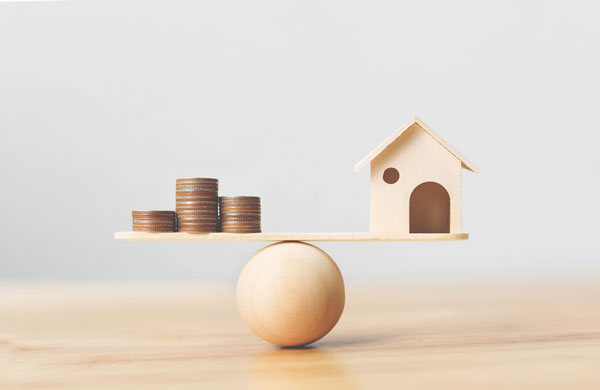Calculating Property Value Based on a Net Return Via Capitalization Rate
The common measure of rental real estate value based on net return rather than gross rental income is the Capitalization Rate (or Cap Rate). In contrast to the GRM, the Cap Rate is not a multiplier but a rate of annual return.
Before you can calculate a value or return based on a capitalization rate, you will need to know the Net Operating Income of the property (NOI).
What Is NOI? Net operating income (NOI) equals all revenue from the property minus all reasonably necessary operating expenses. NOI is a before-tax figure which excludes principal and interest payments on loans, capital expenditures, depreciation, and amortization.
NOI = Annual Rent Amount minus Annual Operating Expenses
What Is the Cap Rate Actually Telling Us? One way to think about the cap rate is that it represents the percentage return an investor would receive on an all cash purchase. In the provided example, an all-cash investment of $14,000,000 would produce an annual return on investment of 6.0%.
What Is a Good Cap Rate? The short answer is that it depends on how you are using the cap rate. For example, if you are selling a property then a lower cap rate is good because it means the value of your property will be higher. On the other hand, if you are buying a property then a higher cap rate is good because it means your initial investment will be lower.
What Is Cash-on-Cash Return (CoC Return)? The cash-on-cash return is the ratio of annual before-tax cash flow (after debt service) to the total amount of cash invested, expressed as a percentage. Cash-on-cash return is typically used in real estate. The cash-on-cash return is calculated by dividing the cash flow by the net operating income (NOI) before tax by the amount of cash initially invested.
Because the cash-on-cash return is a simple metric, it does not tell everything about an investment property. For example, it does not factor in real estate appreciation or tax benefits. Thus, it is only one of several factors indicating whether a real estate investment could be a good investment or not.
What Is The Total Cash Investment? All the cash that you have to pay in order to make your rental property operational. This includes the amount of money to pay to purchase it, closing costs, rehab costs, and loan fees (if you take a loan from the bank).
CoC Return = NOI/Total Cash Investment
As with the Cap Rate calculation, before you can calculate a cash on cash return, you will need to know the Net Operating Income (NOI) of the property.

Cap Rate Example
Let’s take an example of how a cap rate is commonly used. Suppose we are researching the recent sale of an apartment project with a stabilized Net Operating Income (NOI) of $850,000, and a sale price of $14,000,000. In the commercial real estate industry, it is common to say that this property sold at a 6.0% cap rate.
$850,000 / $14,000,000 = 6.0%
Cash-on-Cash Return Example
You're purchasing a small apartment project for a sales price of $4,500,000 and paying 20% in cash as a down payment ($900,000). For estimating purposes, we’ll use 5% of the value for any needed repairs and closing costs equaling $225,000.
Total cash investment = $900,000 + $225,000 = $1,125,000
For estimating purposes, we’ll use $275,000 as our NOI. Now we add the debt service to the equation, assuming an 6% interest loan yield:
6% x $3,600,000 (loan balance) = $216,000 Debt Service
$275,000 – $216,000 = $59,000 NOI
Cash-on-cash Return = NOI/Total Cash Investment
$59,000 / $1,125,000 = 5.2%
Thus, the cash on cash return which you will generate from this rental property if you take a bank loan for 80% of the price is 5.2%.




